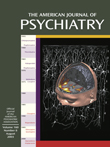Clinical Behavior Therapy: Adults and Children
One of the more recent trends in mental health care is the development of practice guidelines and a greater emphasis on evidence-based treatment. Behavioral therapy has been shown to be empirically effective for many axis I disorders (e.g., depression, panic disorder, bulimia nervosa), and behavioral approaches have been used in recent years to treat different axis II disorders; most attention has been directed at borderline personality disorder. However, mental health care for adults and children is very broad, complicated, and ever changing, especially in the area of treatment. As a result, practitioners can be hard-pressed to keep up with the latest treatment protocols or evidence-based therapy. The large amount of information on the psychological treatment of adults and children is not easily synthesized into one reliable book. The present work, edited by Dr. Hersen, represents an excellent job of assembling, analyzing, and synthesizing this material and discusses treatment from one consistent viewpoint.
This book is divided into two parts that build very effectively on each other. The first part focuses on the behavioral treatment of adult disorders, and the second reviews behavioral interventions for disorders of children and adolescents. The book covers such topics as major depression (adult and childhood), anxiety disorders, posttraumatic stress disorders, eating disorders (adult and childhood), obsessive-compulsive disorder in children, conduct disorder, and mental retardation. The initial chapters of each section begin with a behavioral case conceptualization that sets the stage for the following chapters. Each chapter is organized consistently to give the reader a common blueprint to understand each disorder. Individual chapters go by the following outline: 1) description of the disorder, 2) case description, 3) chief complaint, 4) history, 5) behavioral assessment, 6) medical complications, 7) case conceptualization, 8) rationale for treatment, 9) course of treatment, 10) therapist-client factors, 11) course of termination, 12) follow-up, 13) managed care considerations, and 14) overall effectiveness.
All of the chapters in this edited work are extensively supported by empirical research and integrate research into practical clinical applications. The volume helps the reader understand the biological and psychological underpinnings of specific disorders, and the excellent case vignettes put each disorder into a clear and concise clinical framework. The book will give the reader a foundation to understand the treatment of a wide range of mental health problems and can serve as a primer in advanced undergraduate and graduate courses to detail behavioral interventions for adult and childhood psychiatric disorders. Also, this book would serve as a valuable resource to mental health professionals and researchers who are interested in learning more about the theoretical and empirical nature of treatment for adult and childhood mental health problems. I would heartily recommend this book to any student, psychiatric resident, researcher, or mental health professional who is engaged in research or treatment of adult and childhood psychiatric disorders.



